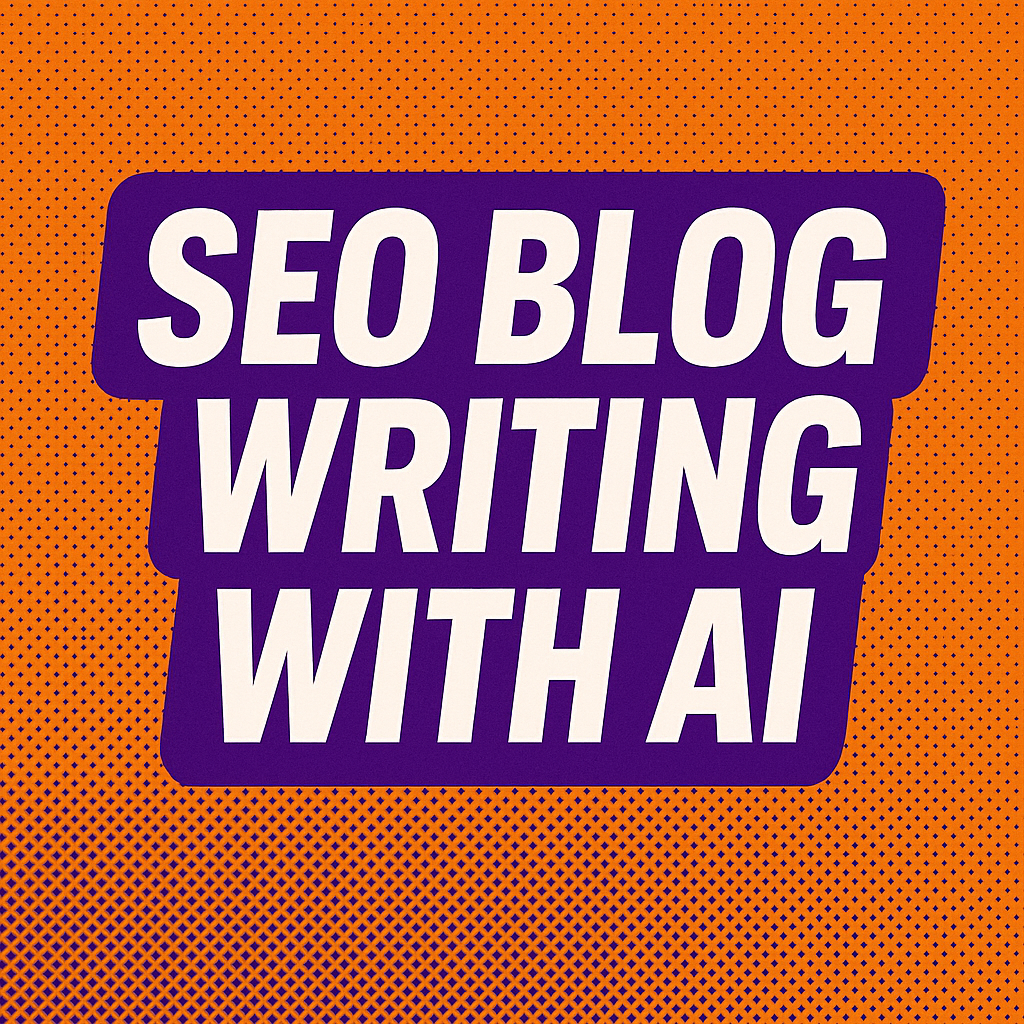Welcome to this comprehensive course on AI-powered SEO blog writing. Whether you're a beginner looking to optimize your existing content or an intermediate blogger ready to take things to the next level, this course blends proven SEO fundamentals with modern AI tools and workflows to help you produce content that ranks and resonates.
By the end of this course, you'll know how to use free tools like Google Search Console, Ahrefs Webmaster Tools, and AI assistants like ChatGPT or Claude to:
- Research search intent and keyword opportunities
- Plan and structure compelling blog posts
- Use AI to write content in your tone and voice
- Optimize titles, meta descriptions, and schema markup
- Monitor rankings and performance for continuous improvement
We'll cover both content strategy and technical SEO, with a strong focus on how to prompt AI effectively so it becomes your research assistant, writing partner, and optimizer — not just a content generator.
What Is SEO Blog Writing (in the AI era)?
SEO blog writing is the practice of crafting blog content that both serves readers and ranks well in search engines. It's not just about inserting keywords — it's about understanding your audience's search intent, writing engaging posts, and structuring them so search engines like Google can crawl, understand, and index them effectively.
But now, with AI, you don't have to do it all manually.
AI tools can help with every stage of the writing process — from idea generation to outlining, drafting, editing, and optimizing. When used thoughtfully, AI can amplify your unique voice, not replace it.
⚠️ Important: AI is a powerful assistant — but your direction, context, and strategy are still essential. The quality of what you get out of AI depends entirely on what you put in. That's why you'll learn how to craft better prompts and feed AI the right inputs throughout this course.
Why SEO Still Matters
Every day, people search Google to answer questions, solve problems, and find helpful content. If your blog isn't optimized, it's unlikely to be discovered. High-quality SEO blog content can:
- Attract consistent, free traffic
- Establish authority and trust
- Increase leads, subscribers, or sales
Without SEO, even brilliant content can get buried. Without value, even well-optimized content won't retain readers. This course helps you bridge both.
Content Strategy vs Technical SEO
We'll be covering two key areas of blog SEO — Content Strategy and Technical SEO — and showing how AI can enhance both.
Content Strategy: What to write, how to match search intent, how to research keywords, and how to structure posts. AI can help here by generating keyword ideas, analyzing competitors, drafting outlines, and even writing first drafts in your tone of voice.
Technical SEO: How to structure and format content for optimal crawling and ranking. AI can assist by generating schema markup, analyzing content gaps, and suggesting meta tags or internal links based on your sitemap or blog index.
Using AI in This Course (How and Where)
Throughout the course, you'll be given AI prompt templates with editable variables — so you can easily adapt them to your niche, tone, and brand.
You'll learn to:
- 🧠 Generate keyword lists based on your target topic and audience
- ✍️ Draft SEO-friendly blog posts with your voice and structure
- 🗂️ Feed in examples of blogs you admire and have AI mirror the tone or format
- 🧱 Get suggestions for headings, FAQs, and schema markup
- 🔁 Create optimized meta titles and descriptions
- 📈 Review content with AI for readability, grammar, and SEO improvements
Prompt Template Example – AI-Powered Keyword Discovery
"You are an SEO expert. I run a blog about [TOPIC]. Give me 20 long-tail keyword ideas for blog posts that a beginner would search for, with high intent but low competition. Format them as a table with Keyword, Intent, and Suggested Blog Title."You'll find dozens more templates like this throughout the course — each with variables you can customize for your use case.
Free Tools We'll Use
This course avoids paid subscriptions. You'll get the most out of the free versions of:
- Google Search Console (GSC) — to monitor performance and identify opportunities
- Ahrefs Webmaster Tools — to see what you're ranking for, and what's missing
- ChatGPT, Claude, or any AI writing assistant — to draft, brainstorm, and optimize
- Google Trends, AnswerThePublic, and others — for extra keyword and topic ideas
Course Structure Overview
Each module in this course builds on the previous, showing how to apply AI within proven SEO workflows. Here's a quick preview:
- Understanding Search Intent — and matching your content to it
- AI-Powered Keyword Research — free tools + AI prompts
- Outlining and Writing Blog Posts — how to feed AI your voice and direction
- On-Page SEO — titles, meta descriptions, headings, schema
- Internal Linking & Images — optimizing what's often overlooked
- Technical SEO Basics — structured data, site speed, crawlability
- Content Refreshing & Measuring Success — monitoring and improving
Each module ends with action steps and AI prompt templates you can use immediately.
✅ Action Steps (for this module)
- Define your blog goals: Traffic? Authority? Leads? Define success first.
- Set up free tools:
- Google Search Console (https://search.google.com/search-console)
- Ahrefs Webmaster Tools (https://ahrefs.com/webmaster-tools)
- Open your AI writing tool of choice: ChatGPT, Claude, Notion AI, etc.
- Try this Prompt:
"I'm starting a blog about [TOPIC]. I want to build authority and attract traffic. Suggest 10 SEO blog post ideas for beginners, along with search intent and estimated reader goal." - Install a notes or content management system where you can store your prompts, outline drafts, keyword ideas, and publish-ready content. Tools like Notion, Google Docs, Obsidian, or WordPress all work well.



